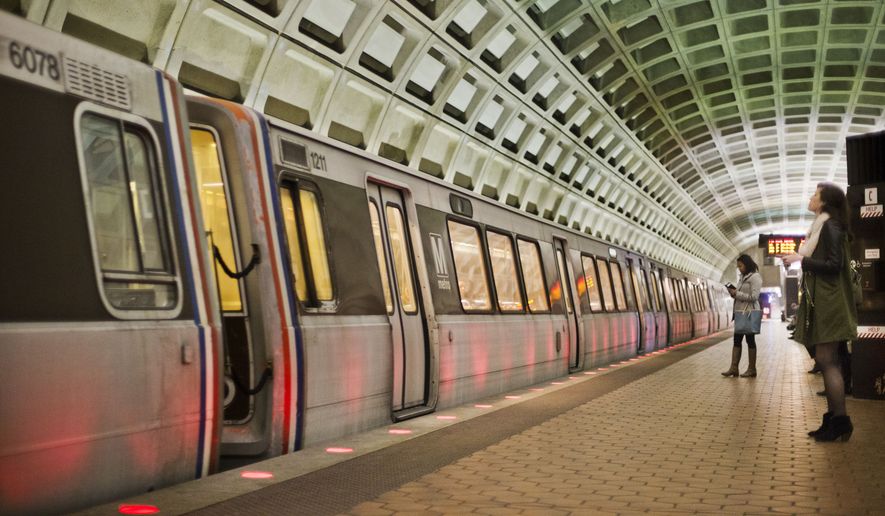Top business leaders warned Wednesday that President Obama’s environmental agenda could derail key infrastructure projects in Greater Washington, including Metro’s long-awaited Purple Line in Maryland and the expansion of Interstate 66 in Virginia.
In a report, the U.S. Chamber of Commerce, AAA Mid-Atlantic, the American Highway Users Alliance and other groups argue that the Environmental Protection Agency’s looming ozone regulations could result in the end of federal funding for major infrastructure plans across the region.
The rules, the final version of which will be released in October, are expected to lower surface ozone standards from 75 parts per billion to 65 to 70 parts per billion.
The Obama administration promises that the updated standards would improve public health and reduce pollution, but critics say the proposal would kill jobs, slow the economy and, as the Chamber of Commerce reported, increase traffic congestion in and around Washington.
“It is the very projects intended to ease congestion to improve air quality that will be hit the hardest. That is an ironic way to improve our [traffic] congestion and our environment,” said Karen Harbert, president and CEO of the Chamber’s Institute for 21st Century Energy.
Under the federal Clean Air Act — the underlying law giving the Environmental Protection Agency the authority to review and update ozone standards — the government can withhold funding for any highway or transit project in a region that fails to meet the standards, which would go into effect in 2018.
That means tens of billions of federal dollars to expand Interstate 270, construct a streetcar system in the District and initiate more than 10 other regional projects could be delayed or shelved indefinitely.
In total, at least 13 projects totaling $511 million in expected federal funds would be at risk, the Chamber of Commerce said.
The EPA, however, said it is highly unlikely that a region would be denied highway funds for failing to meet the standard.
“Violating a standard, or being designated as nonattainment for a standard, does not jeopardize a community’s highway or transit funds,” the agency said in a statement. “Withholding these funds is an extraordinary measure that would only be considered if a state repeatedly failed to take actions required by the Clean Air Act.
“If an area acts in good faith by developing and implementing an initial plan to attain the standard, but does not attain by its attainment date, highway and transit funds will not be withheld. Furthermore, the withholding of highway funds has never happened,” the EPA said.
Consequences of noncompliance aside, many areas of the country are struggling to comply with the EPA’s 2008 ozone standards, raising serious questions about whether the proposed rules are realistic. At least 331 counties across the nation would be out of compliance with the updated standards, the Chamber of Commerce said.
Furthermore, critics say, the EPA is defeating its own central purpose of reducing air pollution. By slowing interstate expansions and public transportation projects, business leaders say, the EPA proposal could drive up air pollution by causing more traffic congestion and increasing the amount of time cars are on the road.
“With all of the hurdles we’ve had to clear, it looks like we’re into the home stretch in being able to do many more projects that will actually soften the blow of commuting in the Washington, D.C., area. … Suddenly, we have a new hurdle that may be out in our way,” said Lon Anderson, managing director of public and government affairs at AAA Mid-Atlantic. “Let’s be clear: Improving congestion also is improving the emissions coming out of vehicles. It’s unacceptable we’re going to have a new bar to get to to address our congestion in this region.”
• Ben Wolfgang can be reached at bwolfgang@washingtontimes.com.




Please read our comment policy before commenting.